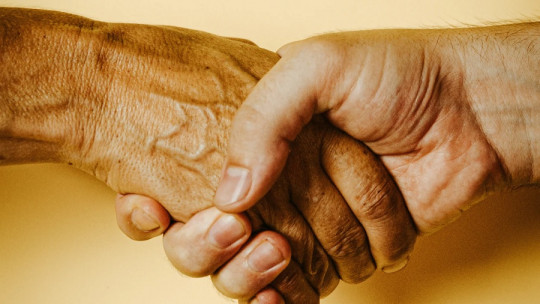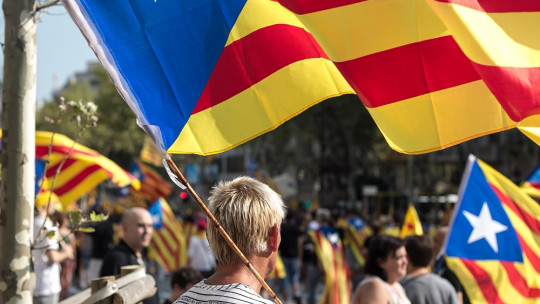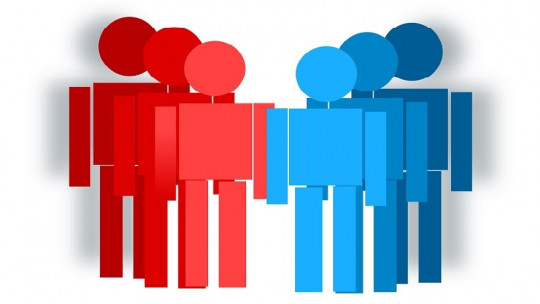
Human behavior depends a lot on each situation. One of the questions that psychology studies is social cognition
We are going to try to delve deeper into this field in order to understand its relevance and what interesting knowledge it is contributing to psychology about a very important part of our behaviors and cognitions, as well as all the processes behind it.
What is social cognition?
Social cognition is the part of psychology that studies the way in which human beings deal with social situations from a scientific point of view That is, it tries to explain the mental processes that make us behave as we do with our peers and even with other living beings, especially those with which we have some type of bond, such as pets.
Social cognition would, therefore, be a branch within social psychology. Within this area, the methods of cognitive psychology would be used as well as the knowledge provided by the theory of information processing to be able to analyze the thought processes that are hidden behind each psychological phenomenon of a social nature.
Within this category, there are several processes that are of interest and that therefore make up the field of study of social cognition. They would be those that have to do with how we perceive social stimuli, the judgment we make of them, how we remember them, what effects social relationships have on the way we process data
I would also analyze the repercussions on the level of behavior among the subjects who have all those previous thought processes. All these factors are taken into account for the different levels that exist in social psychology, that is, the one that concerns the person with himself (intrapersonal), the person with others (interpersonal), the group with himself (intragroup). ) and the group with others (intergroup).
The functioning of social cognition
Social cognition is a fundamental instrument of our psychology, as it encompasses a series of procedures thanks to which people are able to give meaning to all the information that reaches us in the social field and, what is more important, allows us to knowing what is the correct way to behave in front of other people.
That is why it is essential to have a system that automatically collects all the indicators that we find in the information obtained from the environment These stimuli are what trigger automatic reactions, which will go along one line or another depending on the person’s own personality, but also on the emotions they are feeling, the prejudices and stereotypes that arise and their own attitude towards the environment. affair.
But in addition to these automatic reactions, behind social cognition there is also a deliberate reasoning of information about situations with peers. In this analysis, the subject’s mind takes into account both the emotional context and the thoughts and even the intentionality of the other person with the specific interaction that is taking place.
The process of social cognition also feeds back because with each new social experience that the person has, he amplifies his knowledge and therefore learns and optimizes his responses in the future.
The face as an element of social interaction
If we stop for a second to think about a typical social interaction, we will quickly realize that, normally, one of the key elements is the perception of others’ faces. And throughout the entire interaction, if eye contact between both people is possible, a process of constant feedback will occur between one and the other due to the information that both emit and collect.
Through facial gesticulation, both conscious and unconscious, we are transmitting our emotions and our intentionality to others during the interaction Sometimes this process is carried out with very obvious gestures but also with much more subtle changes, and it can even occur precisely through a lack of said gestures.
All these behaviors are valuable information that the other subject immediately collects, processes and in turn generates a series of behaviors (gestures) that will be returned to the initial person. This process occurs in a continuous and bidirectional manner until the interaction ends. It is evident, therefore, that the recognition of facial expressions is key to social cognition.
Of course, although the bulk of the information comes from the face, these signals are added to those of the language, both due to the content itself and the tone of voice used, the words chosen, the inflections and every detail in general of all those who make up the message. Likewise, body posture and non-verbal language will also provide valuable information.
It is evident that, although this is an automatic process, Not everyone has the same ability to correctly and accurately analyze all the information that the other individual is providing them just with a gesture. Therefore, people who show greater sensitivity in this task will start with a clear advantage on a social level over those who have more difficulties in it.
And those who, thanks to their development in social cognition, have a greater capacity to analyze the emotions and intentions of others, will be able to obtain a greater understanding of others, anticipate their feelings and reactions and even guide the behaviors of others to them. your favor. It is one of the qualities of great leaders.
Social cognition in dogs
Social cognition has been widely studied in humans, but is still largely unexplored territory in other species However, there are some studies, such as the one that Dr. Emily Bray and her collaborators carried out in 2020 with Labrador and Golden breed dog puppies, breeds generally used to help people with various alterations in their abilities.
In this study, a series of experiments were carried out with puppies of about nine weeks of age in order to learn more about the thought and emotional processes that take place in these animals in certain social situations, compared to the results previously obtained with dogs. adults in other studies.
One of the questions Bray asked about social cognition in dogs was whether their understanding of certain human signals was innate or learned. The results seem to yield the following conclusions.
First of all, it seems that Certain social skills appear in these animals at a very early age These abilities, furthermore, seem to be innate, since the dogs had not yet had interactions with humans of the type that were sought in the experiments and it is not likely that they learned them during them, since they appeared from the beginning of said studies. Another of the most surprising conclusions is that these degrees also seem to be heritable.
The subjects who were more skilled in certain tasks were descendants of adult dogs that were, in fact, more skilled in the behaviors that the researchers were looking for. This discovery supports the idea that the potential for social cognition can be artificially selected to achieve races that are more skilled in this particular question as in fact happens.
The types of exercises that the puppies in the study were subjected to in order to reach these conclusions were essentially four tests in which their social cognition was evaluated. In the first of them, the researcher presented the animal with two containers of food, at an identical distance, but she pointed to one of them with her hand. Dogs tended to choose said container with a higher probability.
The second test was similar to the first, but instead of pointing, the researcher placed an object in front of one of the stimuli. The dog chose significantly more times the one for which he had been marked.
In the third exercise, the puppy’s reaction to the presence of the human was simply checked, another way to check its social cognition.
Finally, each dog was presented with an exercise in which there was food inside a closed container, which it could not open in any way. That is, it was an exercise without a solution, in which the animal’s reaction was observed. In this case It was found that the puppies sought eye contact with the researcher, seeking instructions on how to proceed








